#Graph SDK
Explore tagged Tumblr posts
Text
I've been peeking at TI-83 Plus documentation in preparation for potentially porting i68soyuz (i80soyuz?) to it, and wowwwwwwww is it foreign. Like I knew there were gonna be differences--they're based on completely different processors,* for god's sake--but man they are different different.
The OSes have nothing in common. The SDKs have nothing in common (I'm having a hard time even finding a C compiler for the TI-83 Plus). The execution models have nothing in common. The privilege controls have nothing in common. The documentations have nothing in common. I'm only barely exaggerating.
This won't be like porting from, say, Windows x64 to Windows ARM, or Windows to Mac. It's more like porting from MS-DOS to N64, except that both MS-DOS and the N64 have easily available C compilers. It's gonna be a lot of work to port even this meager of a codebase.
*The TI-92s, TI-89s and Voyage 200 use Motorola 68000 family CPUs. Every other graphing calculator with a model number starting with TI-8x or TI-7x† use Zilog Z80 family CPUs‡. (Oh, and besides a few twenty year old engineering samples, the TI-Nspires all use ARM9s.) †Not the TI-74 and TI-78, they aren't graphing calculators. They're ...different. TI loves to assign model numbers in weird orders. Oh, and they're based on the TMS7000 microcomputer, which is some in-house shit neither you nor I have ever heard of. Also not the TI-88, which also wasn't a graphing calculator. And was canceled. And used some really in-house shit. ‡The TI-83 Premium CE Edition Python and TI-84 Plus CE Python also include an ARM coprocessor. Long story involving France.
28 notes
·
View notes
Text
Tracing MS Graph SDK
Well, sometimes with the Microsoft Graph SDK I I feel like getting a glipse of the requests and responses send from/to the API.
And it is possible to add debugging by adding a HTTP interceptor.
Here is just a recipe on how I added it in case it helps you: https://gist.github.com/xmanoel/84828c86d03d3d4c2ff892a6e0ca69ba
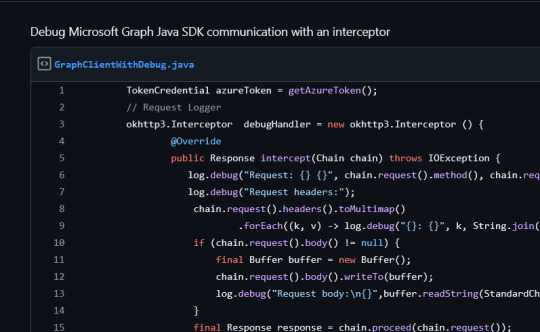
0 notes
Link
0 notes
Text
FlexQAOA Launches Aqarios Luna v1.0 Quantum Optimization

Quantum Optimisation with LUNA v1.0
With LUNA v1.0, Aqarios GmbH becomes a leader in quantum computing's fast-changing sector. This paper introduces FlexQAOA, a breakthrough that reimagines how to solve difficult optimisation problems within practical limitations.
Not just another quantum software update, LUNA v1.0 is a fundamental transformation. FlexQAOA allows developers and academics to natively model restrictions, giving quantum optimisation jobs in material sciences, finance, and logistics unprecedented precision and scalability.
Definition: FlexQAOA
Traditional QAOA has been ineffectual and unreliable due to real-world restriction encoding issues. LUNA v1.0's core engine, FlexQAOA, uses adaptive, modular optimisation. Instead of employing sophisticated post-processing or penalty terms, which diminish accuracy, it intrinsically integrates quantum model restrictions.
FlexQAOA lets users:
Define Hamiltonian hard limits clearly.
Optimise multi-objective, combinatorial, and non-linear problems.
Dynamically adapt to changing problem characteristics, using high-fidelity simulators and quantum hardware.
This method solves constraint-violating problems that were previously unsolvable or had high error rates.
Key LUNA v1.0 Features
Native constraint embedding
The constraint-native design underpins LUNA v1.0. FlexQAOA sees limitations as essential to the quantum issue space, unlike previous techniques that saw them as external. Even in noisy intermediate-scale quantum (NISQ) systems, this ensures high fidelity.
Hardware-Independent Execution
Major quantum computing devices like these are LUNA v1.0-compatible:
IBM Qiskit
Amazon Braket
Google Cirq
D-Wave leap
This lets consumers employ best-in-class hardware for their use case without being limited to one ecosystem. LUNA's abstraction layer ensures quantum backend and classical simulator portability.
Python SDK/API Integration
Developers can construct and implement optimisation models with LUNA's sophisticated Python SDK and a few lines of code. It provides full API access for business apps, enabling real-time logistics orchestration, energy grid balancing, and auto route planning.
Visualization/Debugging Tools
LUNA provides visual convergence, constraint graph, and quantum circuit diagnostics. That helps quantum engineers and scientists do the following:
Find optimisation bottlenecks,
Keep track of convergence,
Investigate quantum circuit paths.
Expandable Constraint Framework
Users can import mathematical formulations or domain-specific logic using plug-in restrictions. LUNA can handle delivery route time windows, financial modelling regulatory compliance, and chemical structure constraints without much reconfiguration.
Also see NordVPN Protects User Data with Post-Quantum Encryption.
LUNA v1.0 Use Cases
Supply Chain Optimisation
Modern supply chains face regulatory compliance, route inefficiencies, and changing demand. LUNA v1.0 lets businesses:
Include time constraints,
Supplier availability changes,
Optimise for many goals to reduce carbon emissions. Results include faster deliveries, lower costs, and green logistics.
Financial Portfolio Optimisation
FlexQAOA excels in regulatory, diversification, and risk-tolerant environments. LUNA's constraint-aware modelling ensures scalable, compliant, and optimal investment strategies for hedge funds and asset managers studying quantum financial instruments.
Energy Grid Management
Energy grid management includes load balancing, peak forecasting, and capacity, demand, and pricing controls. The design of LUNA supports large-scale, real-time energy system modelling, helping utilities plan for:
Power interruptions,
Renewables integration,
Smart grid scalability.
Drug Development and Materials Design
Quantum optimisation is crucial for compound matching and molecular structure design. LUNA can include chemical constraints to help researchers focus their search and speed up R&D. FlexQAOA detects invalid compounds at the circuit level, saving time and computing resources.
LUNA v1.0 Reinvents Benchmark
Accuracy, scalability, and hardware adaptability are essential for quantum advantage. Adjustable constraint-aware optimisation in LUNA v1.0:
Better solution quality and fewer iterations Eschewing post-processing reduces quantum noise sensitivity,
Scalability across domains and issue sizes Future-proof development for fault-tolerant and NISQ devices.
LUNA integrates effortlessly into workflows, unlike earlier systems that needed extensive rewriting or brute-force workarounds to meet limits, providing real commercial gain.
Future intentions for LUNA and Aqarios
Aqarios has previously revealed intentions for:
LUNA's Kubernetes cloud-native implementation and constraint modelling partnerships with European research institutes.
Integration with machine learning toolkits for classical-quantum processes.
Munich-based Aqarios aims to make quantum optimisation scalable, reliable, and accessible for future developers and data scientists.
In conclusion
LUNA v1.0 with FlexQAOA is a quantum computing revolution, not just an update. Cross-domain usefulness, enterprise-level adaptability, and deep constraint integration reinvent quantum optimisation.
As industries seek quantum-ready solutions, LUNA is the platform of choice for solving today's most difficult optimisation challenges.
#LUNAv1#FlexQAOA#AmazonBraket#QAOA#PythonSDK#quantumcomputing#machinelearning#News#Technews#Technology#Technologynews#Technologytrends#Govindhtech
0 notes
Text
Projeto Completo da Placa CM5 HyperModule: Arquitetura Soberana para Computação Modular de Alta Performance
(Baseado em documentação técnica, pesquisas acadêmicas e padrões industriais)
🔍 1. Objetivo Estratégico
Desenvolver uma placa-mãe modular de código aberto para o Compute Module 5 (CM5) que supere dispositivos comerciais como MacBook Air M2 em:
Desempenho Computacional (26 TOPS/W com Hailo-8)
Resiliência Térmica (operar a -20°C a 70°C sem throttling)
Soberania Tecnológica (100% reparável com peças impressas em 3D)
⚙️ 2. Especificações Técnicas da Placa
Núcleo Computacional
Componente Especificação Finalidade SoC Principal Broadcom BCM2712 (4x Cortex-A76) Processamento central Coprocessador IA Hailo-8 M.2 (26 TOPS/W) Inferência neural offline Memória LPDDR5 8GB + FRAM/MRAM para failover Preservação de estado durante falhas
Subsistemas Críticos
Módulo Tecnologia Inovação Térmico Heatpipe de grafeno + PCM magnético Dissipação passiva até 15W TDP Energia Baterias LiFePO4 + Supercaps Maxwell Hot-swap em <5s sem perda de dados Segurança TPM 2.0 + STM32H7 secure enclave Autodestruição física do firmware
🛠️ 3. Design Avançado da PCB
Parâmetros Chave
Característica Especificação Ferramenta de Validação Substrato Rogers 4350B (4 camadas) Simulação Ansys HFSS Impedância 85Ω ±5% (PCIe Gen4) TDR Teledyne LeCroy Dissipação Microcanais capilares integrados Testes em câmara Weiss WK11-340 Conectores Mecânica de travamento magnético Certificação MIL-STD-810H
Topologia de Alimentação
graph LR USB_C[USB-C PD 100W] --> MPPT[Conversor GaN 20A] MPPT --> BMS[BMS Inteligente] BMS --> Supercaps[Buffer Supercaps] Supercaps --> SoC[BCM2712 + Hailo-8]
🔒 4. Protocolos de Segurança e Failover
Arquitetura Zero-Trust
// Pseudo-código do Boot Seguro void secure_boot() { if (tpm_verify(EFI_SIGNATURE) == VALID) { load_os(); } else { stm32h7_fallback(); // Enclave seguro if (physical_tamper_detected()) { destroy_firmware(12V_GPIO_PULSE); // Autodestruição } } }
Failover Energético
Tempo de Transição: < 3ms (via FRAM/MRAM)
Mecanismo:
def power_failover(): if voltage < 3.3V: save_state_to_fram() switch_to_supercaps()
🧪 5. Metodologia de Desenvolvimento
Fases Críticas
Fase Ações-Chave Entregáveis F1 Projeto esquemático (KiCad) + Simulação SI/PI Layout otimizado para PCIe Gen4 F2 Prototipagem rápida (JLCPCB) + Montagem 3x placas funcionais F3 Validação térmica (-20°C a 70°C) Relatório FLIR + dados de throttling F4 Testes de campo (Amazônia com Suzano Foundation) Métricas de autonomia/resiliência F5 Certificações (IEC 62368-1, MIL-STD-810H) Documentação para produção em escala
📦 6. Repositório Técnico Completo
/cm5-hypermodule/ ├── hardware/ │ ├── kicad/ # Projeto completo da PCB │ ├── 3d_models/ # Chassis e dissipadores │ └── bom.csv # Lista de materiais ├── firmware/ │ ├── secure_boot/ # Código UEFI ARM + TPM │ ├── thermal_control/ # Algoritmo LSTM para gestão térmica │ └── biosensors/ # SDK OpenBio └── docs/ ├── MIL-STD-810H_tests/ # Resultados de robustez └── sustainability.pdf # Análise de ciclo de vida
🌐 7. Impacto Estratégico
Inovações Disruptivas
Soberania Tecnológica:
100% projetado com ferramentas open-source (KiCad, TensorFlow Lite)
Produção descentralizada via redes de fab labs
Sustentabilidade Radical:
Chassis em bioplástico reforçado com fibra de cânhamo
Blockchain para rastreamento de materiais
Caso de Uso Real
# Monitoramento ambiental na Amazônia from hypermodule.biosensors import AquaticBioimpedance from edge_ai import HailoInference sensor = AquaticBioimpedance(calibration="river_water") if HailoInference("pollution_detector_v2")(sensor.read()): lora.send_alert(gps.get_coords(), encryption="AES-256")
🔬 8. Validação e Certificação
Teste Padrão Aplicado Resultado Obtido Integridade PCIe Gen4 IEC 61000-4-21 0 erros em 72h @ 60°C Autonomia Workload misto 14h @ 4W (50Wh) Resistência Mecânica MIL-STD-810H Método 514 Sem falhas @ 20G vibração
0 notes
Text
Middle East and Africa Quantum Computing Market Size, Share, Trends, Key Drivers, Growth Opportunities and Competitive Outlook
Middle East and Africa Quantum Computing Market - Size, Share, Demand, Industry Trends and Opportunities
Middle East and Africa Quantum Computing Market, By System (Single Qubit Quantum System, Multiple Qubit System), Qubits (Trapped Ion Qubits, Semiconductor Qubits and Super Conducting), Offering (Systems, Services), Deployment Model (On-Premises, Cloud), Component (Hardware, Software and Services), Application (Cryptography, Simulation, Parallelism, Machine Learning, Algorithms, Others), Logic Gates (Toffoli Gate, Hadamard Gate, Pauli Logic Gates and Others), Verticals (Banking And Finance, Healthcare and Pharmaceuticals, Defense, Automotive, Chemical, Utilities, Others), Country (South Africa, U.A.E, Israel, Egypt, Saudi Arabia and Rest of Middle East and Africa) Industry Trends.
Get the PDF Sample Copy (Including FULL TOC, Graphs and Tables) of this report @
**Segments**
The Middle East and Africa quantum computing market is expected to witness significant growth over the forecast period. The market can be segmented based on components, applications, and end-users. In terms of components, the market can be divided into hardware, software, and services. Hardware components include quantum processors, quantum memory, and quantum gates, among others. Software components encompass quantum algorithms and quantum software development kits (SDKs). Services segment consists of consulting, training, and maintenance services related to quantum computing technologies.
Moving on to applications, the Middle East and Africa quantum computing market can be categorized into cybersecurity, optimization, machine learning, simulation, and others. Quantum computing is increasingly being utilized in cybersecurity to enhance encryption techniques and secure sensitive data. Optimization applications include supply chain management, logistics, and financial portfolio optimization. Machine learning is another key application area where quantum computing can significantly improve complex algorithms and predictive modeling. Furthermore, simulation applications involve quantum simulations for material design, drug discovery, and weather forecasting, among others.
When considering end-users, the market can be segmented into healthcare, BFSI (Banking, Financial Services, and Insurance), aerospace and defense, energy and utilities, and others. The healthcare sector is exploring quantum computing for personalized medicine, genomics, and drug discovery applications. The BFSI industry is leveraging quantum computing for risk management, fraud detection, and algorithmic trading. Aerospace and defense companies are utilizing quantum computing for advanced simulations, cryptography, and satellite communications. Energy and utilities sector are adopting quantum computing for grid optimization, renewable energy integration, and predictive maintenance.
**Market Players**
- IBM Corporation - D-Wave Systems Inc. - Rigetti & Co, Inc. - Google LLC - Microsoft Corporation - Intel Corporation - Anyon Systems Inc. - QC Ware Corp - IonQ Inc.
The Middle East and Africa quantum computing market is witnessing increased investments in research and development activities, strategic partnerships, and collaborations among key market players. IBM Corporation, a prominent player in the quantum computing space, has been focusing on advancing quantum hardware and software capabilities. D-Wave Systems Inc., known for its quantum annealing technology, has been expanding its presence in the region through partnerships with local organizations. Rigetti & Co, Inc. has been making significant advancements in superconducting quantum processors, attracting attention from various industries. Google LLC and Microsoft Corporation are also actively involved in quantum computing research and development, driving innovation in the market.
Market players such as Intel Corporation, Anyon Systems Inc., QC Ware Corp, and IonQ Inc. are contributing to the growth of the Middle East and Africa quantum computing market through their technological expertise and product offerings. These companies are focusing on addressing the specific requirements of industries such as healthcare, BFSI, aerospace and defense, and energy and utilities. With the increasing demand for quantum computing solutions in the region, market players are expected to continue investing in expanding their product portfolios and enhancing their capabilities to cater to diverse end-user needs.
Overall, the Middle East and Africa quantum computing market presents significant growth opportunities driven by the increasing adoption of quantum technologies across various industries. The market players are playing a crucial role in driving innovation, developing advanced solutions, and expanding their market presence through strategic initiatives. As the market continues to evolve, collaborations, partnerships, and investments in research and development will be key factors influencing the competitive landscape and growth trajectory of the quantum computing market in the region.
Access Full 350 Pages PDF Report @
Key points covered in the report: -
The pivotal aspect considered in the Middle East and Africa Quantum Computing Market report consists of the major competitors functioning in the market.
The report includes profiles of companies with prominent positions in the market.
The sales, corporate strategies and technical capabilities of key manufacturers are also mentioned in the report.
The driving factors for the growth of the Middle East and Africa Quantum Computing Market are thoroughly explained along with in-depth descriptions of the industry end users.
The report also elucidates important application segments of the market to readers/users.
This report performs a SWOT analysis of the market. In the final section, the report recalls the sentiments and perspectives of industry-prepared and trained experts.
The experts also evaluate the export/import policies that might propel the growth of the Middle East and Africa Quantum Computing Market.
The Middle East and Africa Quantum Computing Market report provides valuable information for policymakers, investors, stakeholders, service providers, producers, suppliers, and organizations operating in the industry and looking to purchase this research document.
Reasons to Buy:
Review the scope of the Middle East and Africa Quantum Computing Market with recent trends and SWOT analysis.
Outline of market dynamics coupled with market growth effects in coming years.
Middle East and Africa Quantum Computing Market segmentation analysis includes qualitative and quantitative research, including the impact of economic and non-economic aspects.
Middle East and Africa Quantum Computing Market and supply forces that are affecting the growth of the market.
Market value data (millions of US dollars) and volume (millions of units) for each segment and sub-segment.
and strategies adopted by the players in the last five years.
Browse Trending Reports:
South America Biostimulants Market North America Non Ionic Surfactants Market Asia Pacific Sweet Potato Powder Market North America Sweet Potato Powder Market Europe Sweet Potato Powder Market Middle East And Africa Sweet Potato Powder Market India Non Stick Cookware Market Europe Reverse Logistics Market Asia Pacific Reverse Logistics Market North America Reverse Logistics Market Middle East And Africa Reverse Logistics Market
About Data Bridge Market Research:
Data Bridge set forth itself as an unconventional and neoteric Market research and consulting firm with unparalleled level of resilience and integrated approaches. We are determined to unearth the best market opportunities and foster efficient information for your business to thrive in the market. Data Bridge endeavors to provide appropriate solutions to the complex business challenges and initiates an effortless decision-making process.
Contact Us:
Data Bridge Market Research
US: +1 614 591 3140
UK: +44 845 154 9652
APAC : +653 1251 975
Email: [email protected]
0 notes
Text
Unlocking the Power of Microsoft 365 with Microsoft Graph API
In today’s cloud-driven world, businesses rely heavily on productivity tools like Microsoft 365. From Outlook and OneDrive to Teams and SharePoint, these services generate and manage a vast amount of data. But how do developers tap into this ecosystem to build intelligent, integrated solutions? Enter Microsoft Graph API — Microsoft’s unified API endpoint that enables you to access data across its suite of services.
What is Microsoft Graph API?

Microsoft Graph API is a RESTful web API that allows developers to interact with the data of millions of users in Microsoft 365. Whether it’s retrieving calendar events, accessing user profiles, sending emails, or managing documents in OneDrive, Graph API provides a single endpoint to connect it all.

Azure Active Directory
Outlook (Mail, Calendar, Contacts)
Teams
SharePoint
OneDrive
Excel
Planner
To Do
This unified approach simplifies authentication, query syntax, and data access across services.
Key Features
Single Authentication Flow: Using Microsoft Identity Platform, you can authenticate once and gain access to all services under Microsoft Graph.
Deep Integration with Microsoft 365: You can build apps that deeply integrate with the Office ecosystem — for example, a chatbot that reads Teams messages or a dashboard displaying user analytics.
Webhooks & Real-Time Data: Graph API supports webhooks, enabling apps to subscribe to changes in real time (e.g., receive notifications when a new file is uploaded to OneDrive).
Rich Data Access: Gain insights with advanced queries using OData protocol, including filtering, searching, and ordering data.
Extensible Schema: Microsoft Graph lets you extend directory schema for custom applications.
Common Use Cases

Custom Dashboards: Display user metrics like email traffic, document sharing activity, or meetings analytics.
Workplace Automation: Create workflows triggered by calendar events or file uploads.
Team Collaboration Apps: Enhance Microsoft Teams with bots or tabs that use Graph API to fetch user or channel data.
Security & Compliance: Monitor user sign-ins, audit logs, or suspicious activity.
Authentication & Permissions
To use Graph API, your application must be registered in Azure Active Directory. After registration, you can request scopes like User Read, Mail Read, or Files ReadWrite. Microsoft enforces strict permission models to ensure data privacy and control.
Getting Started
Register your app in Azure Portal.
Choose appropriate Microsoft Graph permissions.
Obtain OAuth 2.0 access token.
Call Graph API endpoints using HTTP or SDKs (available for .NET, JavaScript, Python, and more).
Learn More About Our Microsoft Graph API
Microsoft Graph API is a powerful tool that connects you to the heart of Microsoft 365. Whether you’re building enterprise dashboards, automation scripts, or intelligent assistants, Graph API opens the door to endless possibilities. With just a few lines of code, you can tap into the workflows of millions and bring innovation right into the productivity stack.
0 notes
Text
10 Life-Saving Yocto Tips, Tricks & Commands Every Developer Should Know
As embedded engineers, we know that Yocto is unmatched for building custom Linux distributions. But it’s also notoriously complex—small oversights can derail your entire build. Whether you're debugging u-boot, optimizing build time, or managing dependencies, these 10 advanced (non-generic) tips can be a game-changer in your daily Yocto workflow. They're pulled straight from the trenches—tested, impactful, and engineered to save your sanity.
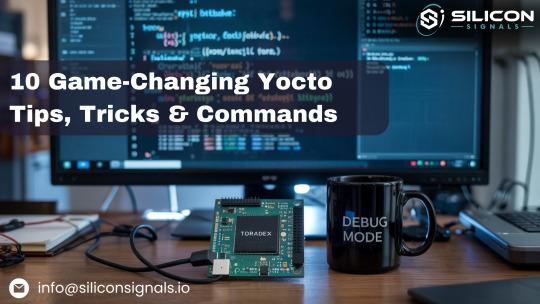
1. 🔍 Use Devshell to Troubleshoot Complex Recipes
Command: bitbake u-boot -c devshell Launch an environment with all patches applied. Great for running commands like make menuconfig or tweaking u-boot/kernel directly. 👉 Speeds up debugging drastically. ⚠️ Be in the right build directory, and close the terminal after use.
2. ♻️ Invalidate sstate Cache for a True Rebuild
Sometimes the sstate cache doesn’t detect upstream changes. A quick comment tweak can trigger a rebuild:- # Package task + # Package task (force rebuild)
👉 Ensures your changes reflect in production builds. ⚠️ Use sparingly to avoid long rebuilds.
3. 🔗 Visualize Dependencies with Graphviz
Command:bitbake -g core-image-minimal dot -Tpng recipe-depends.dot -o dependencies.png
Explore recipe-depends.dot to analyze dependency chains. 👉 Crucial for resolving weird build issues. ⚠️ Keep focus—graphs can get heavy!
4. ⚡ Use Local Sources for Fast Dev Cycles
Add to conf/local.conf:INHERIT += "externalsrc" EXTERNALSRC_pn-yourpkg = "/local/path"
Edit code directly without constant patching. 👉 Game-changer for rapid driver or app iteration. ⚠️ Not ideal for final production images.
5. 🛠️ Automate with Post-Install Scripts
In your .bb recipe:pkg_postinst_${PN}() { cp /foo/bar.conf /etc/bar.conf systemctl enable my-service }
👉 Saves time by automating config and service setup. ⚠️ Ensure it's idempotent to avoid bricking the rootfs.
6. 🔍 Discover Layers Instead of Reinventing
Browse: https://layers.openembedded.org Find community-maintained layers like meta-qt5, meta-raspberrypi, etc. 👉 Cuts weeks off dev time. ⚠️ Double-check layer compatibility with your Yocto release.
7. 📁 Access Recipe Files Using FILESEXTRAPATHS
FILESEXTRAPATHS_prepend := "${THISDIR}/files:" SRC_URI += "file://your.conf"
👉 Keeps your recipes neat while bundling needed configs/patches. ⚠️ Ensure all referenced files exist—build will fail otherwise.
8. 🧰 Add Dev Packages to Your SDK
IMAGE_INSTALL_append = " cppzmq-dev" TOOLCHAIN_TARGET_TASK_append = " cppzmq-dev"
Also, modify SDK meta files if needed. 👉 Makes cross-compilation seamless. ⚠️ Check licenses before shipping SDKs externally.
9. 🚀 Speed Up Builds with Parallelization
In conf/local.conf:BB_NUMBER_THREADS = "8" PARALLEL_MAKE = "-j 8"
👉 Dramatically reduces build time on multi-core machines. ⚠️ Don’t max out your system—monitor memory and CPU usage.
10. 🐞 Troubleshoot Like a Pro with Verbose Logs
bitbake -v -D core-image-minimal bitbake -v -D log.domains=bb.fetch core-image-minimal
👉 Cuts down root-cause hunt time. ⚠️ Logs can get huge—redirect output to a file when needed.
🔁 Bonus: Debug Shared State with .siginfo Files
bitbake --dump-signatures core-image-minimal bitbake-diffsigs file1.siginfo file2.siginfo
Understand why sstate reuse fails by comparing task signatures. 👉 Fixes mysterious rebuild issues. ⚠️ Requires understanding of Python pickled data.
🚨 These Tips Save Time, Effort & Frustration
✅ Faster debugging (devshell, verbose logs, siginfo)
✅ Shorter dev cycles (externalsrc, parallel builds)
✅ Fewer bugs (dependency graphs, cache invalidation)
✅ Cleaner customization (postinst scripts, recipe file handling)
🔧 Working with Yocto?
Let Silicon Signals help you with custom BSPs, embedded Linux builds, and Yocto-based product development. Whether it's board bring-up, device driver integration, or image optimization—we’ve got you covered.
👉 DM us or drop a message to explore how we can support your Yocto needs! or Mail us on [email protected]
www.siliconsignals.io
#YoctoProject#EmbeddedLinux#BSPDevelopment#OpenEmbedded#BitBake#EmbeddedSystems#SiliconSignals#LinuxForDevices#FirmwareEngineering#TechTips
0 notes
Text
MANUS : chiński agent AI. Czy to już AGI? | Gemma 3 od Google oraz inne newsy AI | AI Lunch #24
Podcast AI Lunch w którym posłuchasz na temat:
Manus agent AI prosto z Chin
Manus oparty jest na Claude Sonnet
Manus ma 29 agentów AI do różnych zadań
Manus jest jak gotowy samochód z różnymi funkcjami
Manus korzysta z Browser Use
OWL czyli Manus OpenSource
Co myślisz o chińskich narzędziach AI i bezpieczeństwie?
OpenManus na GitHub
Agent AI od Claude do programowania
Open Interpreter
Claude Code przykład działania
Różnica konsoli ChatGPT do Claude Code
OpenAI Agent SDK - biblioteka do tworzenia agentów AI
Gemma 3 od Google - co potrafi ten model AI?
DeepSeek R1 vs Gemma 3 - porównanie możliwości parametrów
Problem szybkości modeli AI
Perplexity - aplikacja na MacOS, iOS, Android i Google Chrome
Mistral OCR - omawiamy możliwości tego narzędzia
Sam Altman ogłosił przełomowy model do pisania kreatywnych treści
Przyszłość rynku modeli AI
Same - Copy any UI - kopiowanie strony
AI Knowledge graph - narzędzie do grafów wiedzy
Pytania i odpowiedzi dla widzów
Scena SensAI podczas SEO Vibes Whitepress
#sztucznainteligencja#biznes#online#internet#AI#firma#zarabianie#ecommerce#artificialintelligence#ciekawostki#blogger#wiadomosci#podcast
0 notes
Text
AWS Cost Explorer: A Guide to Cost Management and Optimization

AWS Cost Explorer is a powerful tool that helps you visualize, understand, and manage your AWS costs. It provides interactive graphs, cost forecasts, and detailed reports to help optimize cloud spending.
1. Introduction to AWS Cost Explorer
AWS Cost Explorer allows you to: ✅ Analyze your past AWS spending trends. ✅ Forecast future AWS costs. ✅ Identify cost-saving opportunities. ✅ Break down costs by service, region, or linked accounts.
Key Features
Interactive Reports: Filter and group costs by various dimensions (e.g., service, usage type, linked accounts).
Forecasting: Predict future costs based on historical data.
Savings Analysis: Identify underutilized resources and potential savings.
Reservation Reports: Evaluate Reserved Instance and Savings Plan utilization.
2. Enabling AWS Cost Explorer
Before using AWS Cost Explorer, you must enable it in the AWS Management Console.
Steps to Enable Cost Explorer
Sign in to AWS Console and go to Billing Dashboard.
Click on Cost Management → Cost Explorer.
Click Enable Cost Explorer (if not already enabled).
Wait a few hours for AWS to process your cost data.
3. Using AWS Cost Explorer
3.1 Viewing AWS Cost Reports
Navigate to AWS Cost Explorer in the AWS console.
Select a date range (e.g., last 6 months).
Choose a granularity (daily, monthly, or hourly).
Filter by service, region, or linked accounts.
3.2 Forecasting AWS Costs
AWS Cost Explorer provides cost forecasts based on historical trends.
Select the Forecast option in Cost Explorer.
Choose a future time period (e.g., next 3 months).
AWS will estimate your projected spending.
3.3 Identifying Cost Optimization Opportunities
Use AWS Cost Explorer to find:
Idle resources (e.g., unused EC2 instances, low-utilization RDS databases).
Expensive services driving up costs.
Underutilized Reserved Instances (RI) and Savings Plans.
4. Automating AWS Cost Monitoring with Python (boto3)
You can use the AWS SDK for Python (boto3) to automate cost analysis.
Example: Fetch AWS Cost Data using Boto3
pythonimport boto3# Initialize Cost Explorer client client = boto3.client("ce", region_name="us-east-1")# Fetch last month's cost data response = client.get_cost_and_usage( TimePeriod={"Start": "2024-01-01", "End": "2024-01-31"}, Granularity="MONTHLY", Metrics=["BlendedCost"], GroupBy=[{"Type": "DIMENSION", "Key": "SERVICE"}], )# Print cost breakdown by service for item in response["ResultsByTime"][0]["Groups"]: print(f"Service: {item['Keys'][0]}, Cost: ${item['Metrics']['BlendedCost']['Amount']}")
Explanation:
The script retrieves AWS cost data for January 2024.
It groups costs by AWS service (e.g., EC2, S3, Lambda).
5. Best Practices for Cost Optimization with AWS Cost Explorer
✔ Monitor Spending Regularly: Set up budgets and alerts for unexpected cost spikes. ✔ Use Reserved Instances and Savings Plans: Reduce long-term costs. ✔ Leverage Spot Instances: Cut compute costs significantly. ✔ Optimize Storage Costs: Move infrequent data to S3 Glacier or Intelligent-Tiering. ✔ Turn Off Unused Resources: Stop idle EC2 instances and delete unused EBS volumes.
6. Conclusion
AWS Cost Explorer is an essential tool for tracking and optimizing cloud costs. By using its reports and automation with boto3, businesses can gain insights into AWS spending and apply cost-saving strategies effectively.
WEBSITE: https://www.ficusoft.in/aws-training-in-chennai/
0 notes
Text
RIGGING WORKSHOP
Introduction to Rigging with Nadeesha Jayasundara (Mogo Studios)
Rigging Basics:
Freeze Transformations: Modify > Freeze Transformations resets location data to 0 without changing the object’s position.
Moving Along Local Axis: Ctrl + Shift + Right Click ‘Object’ or use shortcuts (e.g., R + Left Click to scale).
Parenting:
Select child first, then parent, press P. A child can have one parent, but a parent can have multiple children.
Use constraints instead of parenting for a cleaner rig.
For constraints, select parent first, then child, switch to Rigging/Animation, and set constraints.
Controllers & Naming Conventions:
NURBS curves (usually circles) are used as controllers since they don’t appear in renders.
Naming conventions:
Meshes → _GEO
Joints → _JNT
Controllers → _CTRL
Groups → _GRP
Joint Chains & Hierarchy:
Joints create bones when connected. A joint chain forms a hierarchical control structure.
Joint Orientation: X-axis should point to the next joint.
Forward Kinematics (FK) & Inverse Kinematics (IK):
FK: Controls each joint independently (good for arcs and organic motion).
IK: Moves an entire chain with one controller (good for legs and arms).
Rigging Preparation:
Before Rigging:
Clean up the model (retopology).
Check scale & units to avoid joint placement issues.
Ensure the model faces X-axis.
Complete UV unwrapping before skinning.
Freeze transformations and ensure the mesh is at world origin.
Constraints vs. Parenting:
Parent Constraint: Acts like parenting but doesn’t change hierarchy (affects movement & rotation, but not scaling).
Maintain Offset: Keeps object positions when constraining.
Pivot Adjustments & Drawing Overrides
Move Pivot: Press D to adjust.
Customize Controller Color:
Right-click NURBS curve > Control Vertex > Adjust shape.
In Attribute Editor, enable Drawing Overrides and change color.
Set Driven Key (SDK):
Used to automate control movements (e.g., a gate opening with a slider).
Process:
Select the controller → Animation → Set Driven Key.
Define Driver (controller attribute) and Driven (affected object).
Load them into SDK, set keyframes for attribute values.
Bouncing Ball Rig:
Create NURBS controllers (one for base, one for sphere).
Parent middle controller to base controller.
Squash Deformer:
Select sphere → Deform > Nonlinear > Squash.
Adjust Low Bound (0) and High Bound if needed.
Use Set Driven Key to connect squash factor to Translate Y.
Hierarchy:
Squash handle & squash controller → Main controller → Root.
Graph Editor: Adjust keyframe tangents to linear.
Leg Rig Setup;
Create joints:
Use Skeleton > Create Joints.
Name joints (hip_JNT, knee_JNT, ankle_JNT).
Resize joints if needed (Display > Animation > Joint Size).
Controllers:
Create NURBS curves for each joint, rename (hip_CTRL, knee_CTRL, etc.).
Freeze transformations.
Parent controllers to groups (hip_GRP, knee_GRP, etc.).
Align Pivots:
Select group → Move to joint center using V (snap to point).
Constrain Controllers to Joints:
Use Parent Constraint (Maintain Offset ON).
Binding the Rig to the Mesh
Select all joints & mesh.
Skin > Bind Skin:
Bind to: Selected joints.
Max Influence: 3.
Apply.
Weight Painting: Adjust how much each joint affects the mesh.
Advanced Skeleton Plugin (For Biped Rigs):
Install Advanced Skeleton plugin.
Load Female GEO file.
Fit Joints to Character: Scale and align joints correctly.
Click Build Advanced Skeleton.
Adjust deformation settings if needed.
Final Steps
Check weight painting.
Publish rig and save separately.
Ready for animation!
PRO TIPS:
DON’T MESS UP HIERARCHY.
RENAME EVERYTHING PROPERLY.
Use Constraints Instead of Parenting for Cleaner Rigs.
*cr. to Sayaka’s long notes, from which i summarized the above.
0 notes
Text
How Alephium (ALPH) Revolutionizes Blockchain Technology
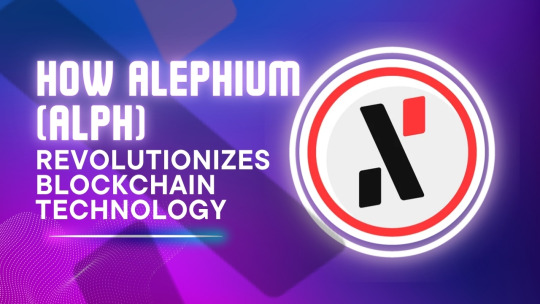
Alephium is a cutting-edge sharded layer-one blockchain designed to overcome the limitations of existing blockchains, such as scalability, accessibility, and security. It’s an ideal platform for developers to create scalable decentralized applications (DApps) while offering individuals the benefits of decentralization and robust security.
Alephium focuses on solving today’s blockchain scalability and security issues by enhancing Proof-of-Work (PoW) and utilizing the Unspent Transaction Output (UTXO) model. Essentially, Alephium enables the creation of high-performance, accessible, and energy-efficient DApps and smart contracts.
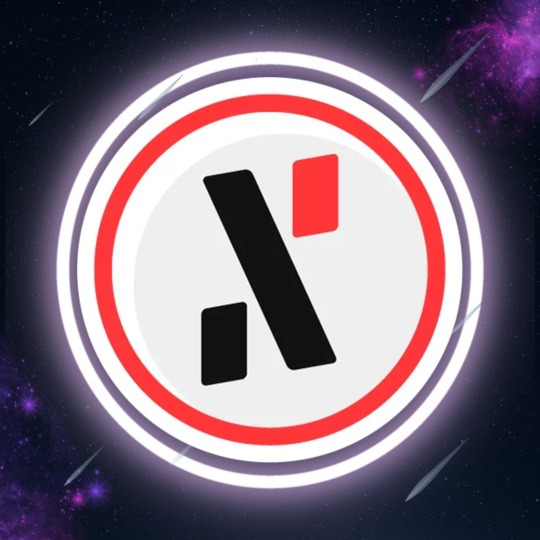
How Alephium Works
Alephium employs several innovative technologies to address the traditional blockchain drawbacks and improve scalability, programmability, security, and energy efficiency. Let’s dive into these features.
Enhancing Scalability with BlockFlow Sharding
Alephium utilizes a sharding algorithm called BlockFlow to boost scalability. Sharding splits data into smaller, manageable parts called shards, facilitating parallel transactions. The UTXO model and Directed Acyclic Graph (DAG) data structure further aid effective sharding, allowing Alephium to handle around 10,000 transactions per second.
Boosting Energy Efficiency with Proof-of-Less-Work (PoLW)
The blockchain employs a unique Proof-of-Less-Work (PoLW) consensus mechanism, adjusting mining difficulty based on real-time network conditions. This approach significantly reduces energy consumption compared to traditional PoW algorithms.
Enhancing Programmability and Security with the UTXO Model
Alephium uses the UTXO model to enhance programmability and security, ensuring fast, efficient transactions. This model maintains the same level of security as Bitcoin while offering better scalability and flexibility.
Leveraging a Custom Virtual Machine and Programming Language
Alephium has its own virtual machine, SDK, and a performance-optimized programming language. These tools include built-in security features that prevent unauthorized transactions and common attack vectors. Developers can leverage these innovations to build advanced DApps and smart contracts.
What Makes Alephium Unique?
Alephium stands out from other blockchains with its unique combination of features designed to improve scalability, security, and energy efficiency.
Maximizing Efficiency with Sharding
Sharding divides the network into smaller, manageable subsets called shards, each acting as an independent blockchain. This allows for parallel transaction processing, distributing the workload across multiple shards and increasing overall throughput and network capacity.
Leveraging the UTXO Model for Enhanced Security and Flexibility
The UTXO model uses unspent transaction outputs as inputs for new transactions, enhancing scalability and programmability. This model ensures secure and efficient transactions while maintaining Bitcoin-level security.
Achieving Energy Efficiency with Proof-of-Less-Work (PoLW)
Alephium’s PoLW consensus mechanism minimizes energy consumption compared to traditional PoW algorithms. This makes Alephium much more energy-efficient than Bitcoin.
Custom Virtual Machine for Superior Performance
Alephium’s custom VM, Alphred, addresses the drawbacks of existing DApp platforms by improving security, scalability, and programmability. It enables developers to create Peer-to-Peer (P2P) smart contracts with ease.
Ralph: A Unique Programming Language for DApps
Alephium features its own programming language, Ralph, specifically designed for building secure and efficient DApps and smart contracts. This empowers businesses and individuals to leverage Alephium’s robust blockchain platform.
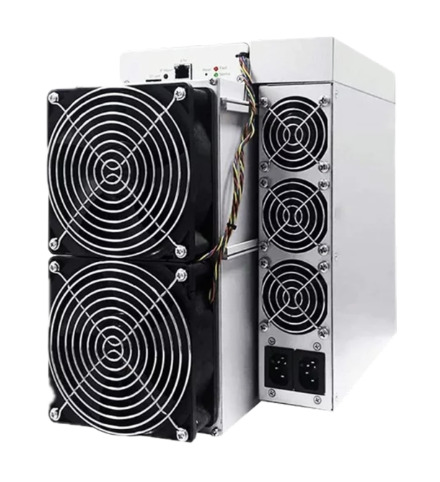
✓ Manufacturer: Bitmain ✓ Model: Antminer AL3 ✓ Supported Algorithm: Alephium (ALPH) ✓ Hashrate: 8 TH/s ✓ Power Consumption: 3200W ✓ Dimensions: 195 x 290 x 430 mm ✓ Weight: 14.2 kg ✓ Operating Noise Level: 75 dB ✓ Power Supply Unit: Included ✓ Release Date: August 2024 ✓ Warranty: 1 year manufacturer repair or replace
Wrapping Up
Alephium provides a scalable and secure blockchain platform with innovative features like sharding, the UTXO model, and PoLW consensus. These elements make Alephium a powerful tool for developers and individuals looking to create reliable and efficient decentralized applications.
Muhammad Hussnain Visit us on social media: Facebook | Twitter | LinkedIn | Instagram | YouTube TikTok
0 notes
Text
Pixtral Large 25.02: Amazon Bedrock Serverless Multimodal AI

AWS releases Pixtral Large 25.02 for serverless Amazon Bedrock.
Amazon Bedrock Pixtral Large
The Pixtral Large 25.02 model is now completely managed and serverless on Amazon Bedrock. AWS was the first major cloud service to provide serverless, fully managed Pixtral Large.
Infrastructure design, specific expertise, and continual optimisation are often needed to manage massive foundation model (FM) computational demands. Many clients must manage complex infrastructures or choose between cost and performance when deploying sophisticated models.
Mistral AI's first multimodal model, Pixtral Large, combines high language understanding with advanced visuals. Its 128K context window makes it ideal for complex visual reasoning. The model performs well on MathVista, DocVQA, and VQAv2, proving its effectiveness in document analysis, chart interpretation, and natural picture understanding.
Pixtral Large excels at multilingualism. Global teams and apps can use English, French, German, Spanish, Italian, Chinese, Japanese, Korean, Portuguese, Dutch, and Polish. Python, Java, C, C++, JavaScript, Bash, Swift, and Fortran are among the 80 languages it can write and read.
Developers will like the model's agent-centric architecture since it integrates with current systems via function calling and JSON output formatting. Its sturdy system fast adherence improves dependability in large context situations and RAG applications.
This complex model is currently available in Amazon Bedrock without infrastructure for Pixtral Large. Serverless allows you to scale usage based on demand without prior commitments or capacity planning. No wasted resources mean you only pay for what you utilise.
Deduction across regions
Pixtral Large is now available in Amazon Bedrock across various AWS Regions due to cross-region inference.
Amazon Bedrock cross-Region inference lets you access a single FM across many regions with high availability and low latency for global applications. A model deployed in both the US and Europe may be accessible via region-specific API endpoints with various prefixes: us.model-id for US and eu.model-id for European.
By confining data processing within defined geographic borders, Amazon Bedrock may comply with laws and save latency by sending inference requests to the user's nearest endpoint. The system automatically manages load balancing and traffic routing across Regional installations to enable seamless scalability and redundancy without your monitoring.
How it works?
I always investigate how new capabilities might solve actual problems as a developer advocate. The Amazon Bedrock Converse API's new multimodal features were perfect for testing when she sought for help with her physics exam.
It struggled to solve these challenges. It realised this was the best usage for the new multimodal characteristics. The Converse API was used to create a rudimentary application that could comprehend photographs of a complex problem sheet with graphs and mathematical symbols. Once the physics test materials were uploaded, ask the model to explain the response process.
The following event impressed them both. Model interpreted schematics, mathematical notation, and French language, and described each difficulty step-by-step. The computer kept context throughout the talk and offered follow-up questions about certain issues to make teaching feel natural.
It was confident and ready for this test, showing how Amazon Bedrock's multimodal capabilities can provide users meaningful experiences.
Start now
The new method is available at US East (Ohio, N. Virginia), US West (Oregon), and Europe (Frankfurt, Ireland, Paris, Stockholm) Regional API endpoints. Regional availability reduces latency, meeting data residency criteria.
Use the AWS CLI, SDK, or Management Console to programmatically access the model using the model ID mistral.pixtral-large-2502-v1:0.
Developers and organisations of all sizes may now employ strong multimodal AI, a major leap. AWS serverless infrastructure with Mistral AI's cutting-edge model let you focus on designing innovative apps without worrying about complexity.
#technology#technews#govindhtech#news#technologynews#AI#artificial intelligence#Pixtral Large#Amazon Bedrock#Mistral AI#Pixtral Large 25.02#Pixtral Large 25.02 model#multimodal model
0 notes
Photo
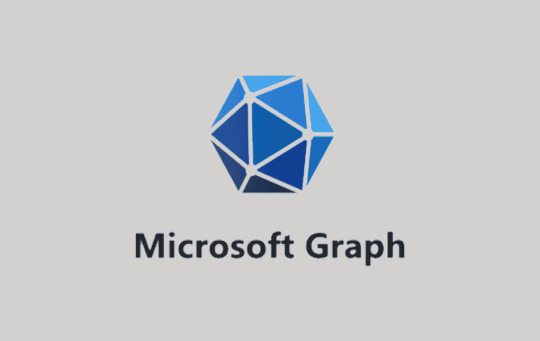
Comparing Invoke-RestMethod to the Microsoft Graph PowerShell SDK 👉 Read the article: https://bonguides.com/comparing-invoke-restmethod-to-the-microsoft-graph-powershell-sdk/?feed_id=375&_unique_id=66616190b0963
0 notes
Link
Jacob Roach / Digital Trends Microsoft has released Agility SDK 1.613.0, which features some critical components that will be presented to developers at the Game Developers Conference (GDC) in San Francisco next week. The most interesting elem... bitrise.co.in
0 notes